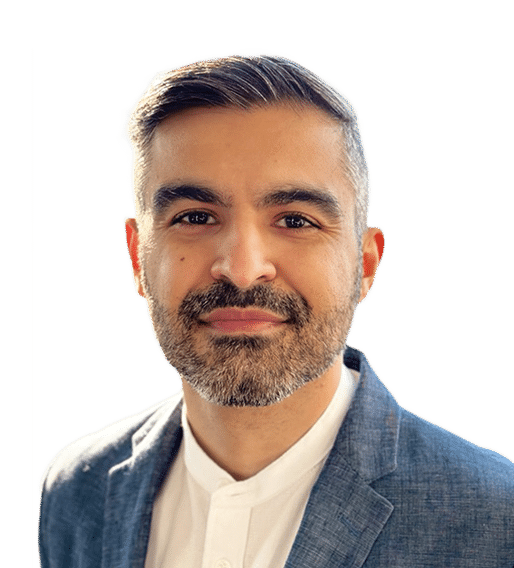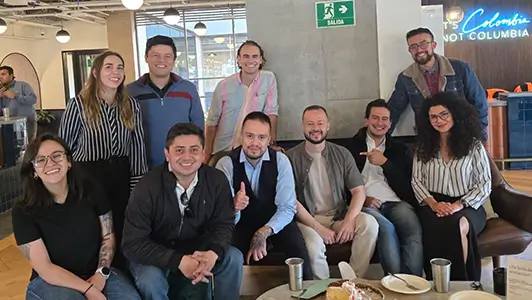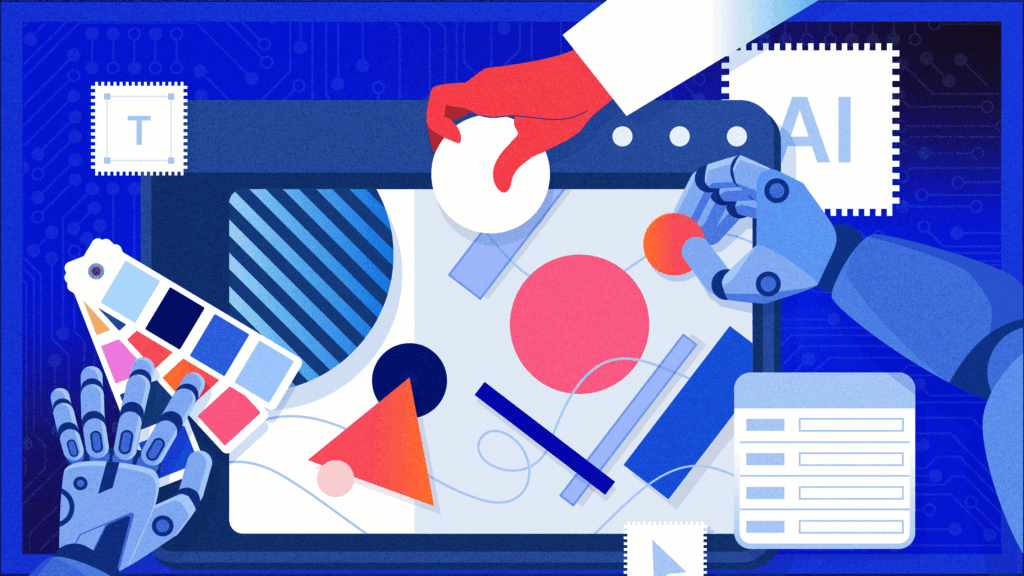Change is inevitable
Benjamin Franklin gave us one of the most enduring observations about life’s certainties: death and taxes. But what he failed to mention, perhaps because it was so obvious, so woven into the fabric of existence that it didn’t even need stating, is change.
Change operates on its own timeline, sometimes glacial, sometimes sudden. It is the silent force behind revolutions, the invisible hand that redraws industries, and the quiet architect of human behavior. Franklin may not have included it on his famous shortlist, but if he were alive today, watching the warp-speed transformations of the modern age, he might just revise his declaration: Death, taxes, and the relentless, unavoidable force of change.
The current change landscape
According to Gartner, the average employee experienced 10 planned enterprise changes in 2022 compared with only 2 in 2016. Yet, despite the prevalence of change, employees often harbor skepticism, anxiety, and fear, with only 15% feeling confident in their leaders’ ability to navigate transitions effectively. To make matters worse, employee willingness to support organizational change dropped from 74% in 2016 to just 43% in 2022.
This 31% drop-in support for enterprise change in less than a decade is no doubt reflective of the whirlwind the world has experienced over the last 5 years. Politically, economically, socially—every aspect of life has been reshaped in ways that few could have predicted. Change has not been a choice; it has been a constant imposition in everyday life. And with that level of disruption comes an inevitable consequence: exhaustion.
A recent survey puts numbers to this reality: seventy-three percent of HR leaders report that employees are fatigued from change. Their lack of support for change isn’t necessarily related to the change itself, but rather the added uncertainty, and uncertainty fuels anxiety. What does this mean for their role? Their responsibilities? Their future? Considering how to mitigate these concerns and create psychological safety in the process has become a non-negotiable in executing successful change within an organization.
Things to consider before implementation
We know going into change with no plan is a recipe for disaster, but we also know that a plan is simply not enough. Enabling change is more than training materials, one-pagers, and communications. It’s about building relationships, putting yourself in someone else’s shoes, and understanding how all the pieces of the transformation fit together. Think of it like a detective role – seeking to understand each stakeholder’s story, how you can bring them along their own unique transformation journey and enable them to embrace it because they want to. Here are a few things to keep in mind as you tackle your change enablement approach.
Understand your organization’s DNA
Before any meaningful change can take hold, you must understand the culture, history, and internal rhythms of the organization. These factors are not just background noise, they shape how change is received, whether it gains traction or stalls before it even begins. No matter how necessary or well-intentioned a change may be, if the environment is not fully understood and prepared for, resistance is inevitable.
It is vital to consider what values are non-negotiable? How does the existing culture support or challenge the changes being introduced? What adjustments will employees need to make, not just to comply with the change, but to take ownership of it.
When organizations take the time to answer these types of questions, change is no longer something imposed from the outside. It becomes something that integrates naturally, aligning with the way people already think and work. The difference between success and failure is not just in the change itself, it is in how well it fits into the desired DNA of the organization.
Establish the level of change
Change doesn’t always look like a company-wide overhaul of deep processes, completely new approaches to earning clients, or an urgent matter that requires all hands-on deck. Sometimes it’s a software change for one team, a modification of a current process, or even a new leadership structure. The scale and timeline of the planned change will influence how it’s treated at implementation.
Find a change model that will work
The kind of change you want to implement, and the underlying DNA of your organization, will determine the approach you take. Change is not a one-size-fits-all process. It is shaped by history, leadership style, employee engagement, and the overall culture of the organization.
There are plenty of established models to choose from. Kotter’s Eight Steps, ADKAR, and others have been studied, tested, and refined over time. They offer a structured way to think about transformation, but they are not blueprints, they are starting points. The real work comes in understanding which approach aligns with your organization’s specific needs, its strengths, and its natural way of adapting.
Pariveda’s approach: change enablement
Eighty percent of organizations still rely on a top-down model for change. Meaning leaders make the decisions, pass them down the chain, and expect compliance. But here is the issue, only one-third of those organizations achieve their stated goals.
But something has shifted. Employees today have higher expectations. They no longer see change as something that happens to them, but rather something that should happen with them. They want a voice, a role, a stake in the process. The old dictate and demand approach is losing its grip. In its place, a new philosophy is emerging – change enablement.
And the numbers support this shift. When employees are engaged, when they help develop and implement the plan, the success rate increases by 24%. These numbers tell a clear story; the outdated model built on control, process, and compliance, when change is imposed rather than co-created, is no longer a viable means of change.
The difference is subtle but profound. Rather than enforcing change from above, organizations are learning to empower employees from within. They’re realizing that successful transformation isn’t just about strategy, it’s about psychology. People don’t resist change itself; they resist being changed without agency.
Pariveda’s approach to change enablement, specifically through our “Head + Heart + Hands” approach, reflects this shift in employee expectation and the neuroscience of achieving successful change. We’ve designed our process around the human experience because we recognize the importance of equipping our people with the resources, training, and tools they need to be individually successful. Empowered employees are motivated to apply themselves, which results in the desired organization-wide change.
There are four phases to our Head + Heart + Hands approach that cover all the steps necessary to bring about the change you desire in your organization.
Plan
As with all change enablement models, planning is key. We take time to observe, analyze, strategize, and design a roadmap that is unique to you. No organization is the same, so we take care to ensure all aspects of your organization are accounted for. At this stage, we want to create a “why” for your employees, a compelling narrative they can attach to and find meaning in. The plan is a framework from which you source purpose and context, it is the setup that shows employees how the changes are better than the status quo.
Important elements of this phase:
- Define a compelling transformation story (the “why” or burning platform) to earn support and create momentum
- Create a climate and culture for change
- Establish a foundation for the change and anchors it in the department’s strategy
- Build awareness and reinforce the need for change
Implement
This is the moment when theory turns into reality, when plans stop being hypothetical and start taking shape in real time. It is tempting to think of implementation as a straightforward process, but in practice, it is anything but. It is dynamic, fluid, and often unpredictable.
Some employees will need hands-on coaching and reassurance, while others will adapt almost instinctively, moving ahead without hesitation. There is no single formula because organizations are not static. They are made up of individuals with different capacities, different thresholds for uncertainty, and different relationships to change itself.
Over time, the urgency of the initial rollout fades. The dust settles, and the new way of doing things begins to feel familiar. But familiarity does not mean the work is done. The support an organization offers at this stage may look different than it did on Day 1, but it is no less important. Change is not just about implementation. It is about reinforcement, about making new habits stick, about ensuring that what was once an initiative becomes part of the organization’s DNA.
Important elements of this phase:
- Give people the information, tools, and skills to successfully adopt the change
- Embed the desired behaviors in the team/department’s culture and day-to-day operations
- Ensure the change remains a priority
Manage
You can’t plan for everything at the outset, which is why we make time to ensure everything runs smoothly and create space to adjust as you go. Just as the support an organization provides changes through the process, so may the process. We are not in the business of forcing a change to happen exactly as we plan; we make room for improvements and adjustments that make the change as successful as possible. It takes time for an organizational change to take root, so in managing the change, we nurture it properly to ensure it sticks.
Important elements of this phase:
- Measure change adoption, celebrate successes, and allow for real-time feedback loops
- Monitor and continue to strengthen change
- Reinforce and maintain the change until it is declared successful and embedded
- Ensure the change remains a priority
Lead change that lasts—from the inside out
Change, no matter how small, is never just a simple adjustment. It is an investment—of time, of effort, of trust. Planning for it, implementing it, and managing it is rarely a straightforward process. Even the most seemingly minor shifts require careful consideration because, ultimately, change is not just about systems or policies, it’s about people.
Research consistently shows that employees want a say in the changes that affect them. The old top-down approach, where decisions are made in boardrooms and handed down for execution, it both ineffective and demoralizing. Pariveda’s approach is one that puts employees as architects of change rather than subjects of it, which has proven to increase the likelihood of success.
This is the thinking behind our Head + Heart + Hands approach. Change does not succeed because of a single sweeping decision. It succeeds when individuals at every level are equipped with the knowledge, the conviction, and the practical tools to make it work. At Pariveda, we believe change is most effective when it is clear, intentional, and actionable. We break it down into meaningful steps, where employees are empowered to navigate change so that, both they and the organization emerge stronger.
Benjamin Franklin may not have included it on his famous shortlist, but if he were alive today, watching the warp-speed transformations of the modern age, he might just revise his declaration: Death, taxes, and the relentless, unavoidable force of change. Are you ready to embrace it and make it work for you?



















